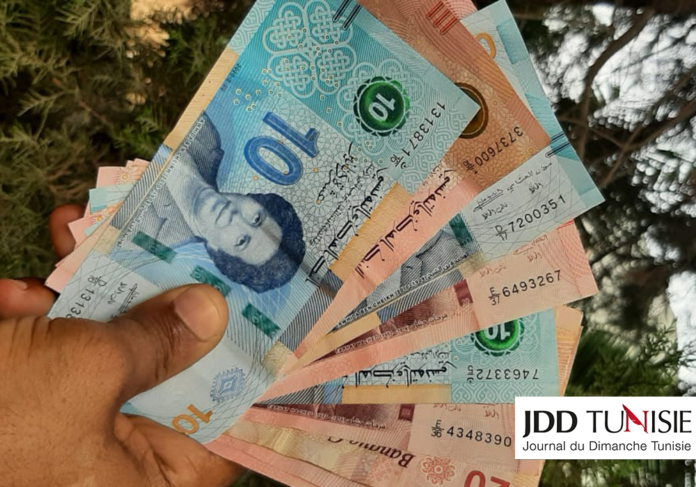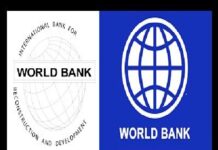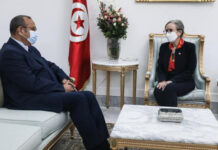Summary : The health crisis occurred in Tunisia in an already fragile economic context, leading to a recession of 8.6% of GDP. While the recovery scenario is being mortgaged by the health crisis, the social situation and political instability, a consensus is emerging on the unsustainable path of public debt in the absence of a solid and credible programme of structural reforms. The filing of a request for financing from the IMF will be scrutinized as a real commitment by the Tunisian authorities to pursue the reforms essential to maintain the mobilization of donors, but also private investors.
The covid-19 crisis occurred in an already fragile economic context
The Covid-19 crisis has led to a historic recession. GDP will eventually have fallen by 8.6% in 2020, the largest decline in North Africa excluding Libya. Tunisia has entered the crisis weakened and dependent on highly exposed sectors such as tourism. The early and strict health measures taken in the spring made it possible to avoid a first epidemic wave but at the cost of a massive recessive effect (fall in GDP of 19% in the 2nd quarter quarter-on-quarter). Since then, the loss of control of the health situation (2nd most affected country in Africa after South Africa) has led to the return of less strong but lasting restrictive measures, hindering the recovery (-0.3% y.o. in the 4th quarter after +19% in the 3rd quarter).

The pace of the vaccination campaign at the international and domestic level makes it unlikely that they will be lifted quickly, in time to save the tourist season. The scenario of a moderate recovery (+3.8% for the IMF and +4.1% for the Tunisian authorities) remains optimistic in view of the health situation, but also political and social.
The impact of the health crisis is on an economy with already fragile fundamentals. The Tunisian economy is handicapped by many structural obstacles, which the political instability since the revolution does not allow to overcome. Supported by household consumption (73% of GDP), it is poorly diversified and exposed to the cyclical vagaries of certain sectors such as the agricultural sector (9% of GDP) and tourism (5% of GDP, but up to 14% of GDP indirectly). The importance of a bloated administration and inefficient public operators are powerful obstacles to investment and the development of a competitive industry. The deterioration of the situation of a hundred public companies representing more than 10% of GDP and 100,000 jobs is particularly worrying. Gross investment and savings rates, already considered insufficient, collapsed in 2020, from 17.2 to 7.8% for the former and from 8.8 to 1% for the latter.
Deterioration of the social situation
While inflationary pressures appear to be contained, the deterioration in the social and employment situation is maintaining tensions. While inflation is less eroding household purchasing power, with inflation slowing from 6.7% in 2019 to 4.9% currently, social indicators, which have not seen any real improvement since the revolution, have deteriorated sharply and obstacles to employment have increased, fuelling frustrations: the poverty rate has risen from 14% to 21% in one year and the unemployment rate reaches 17.4% of the working population and particularly affects young people (36%). Bearing witness to the deterioration of the social situation, demonstrations for wage demands and employment have multiplied in several regions of southern and inland Tunisia strongly affected by precariousness, having led to the shutdown of production sites (hydrocarbons and phosphate) and disrupted economic activity.
The current resilience of the banking sector seems reassuring, but uncertainty remains about the magnitude of the coming shock and the sector’s ability to cope with it. The banking sector was able to cushion the shock of the crisis thanks to the easing measures of the Central Bank (BCT):

lowering key interest rates from 7.75% to 6.25% and postponing credit maturities in particular, extended until next September. The latest stress tests carried out by the BCT would demonstrate good resilience of solvency ratios in the event of a shock. However, the situation remains uncertain in the long term, as the postponement of credit maturities does not reveal the true solvency situation of many companies. The concern concerns in particular the exposure of banks to state-owned enterprises, whose cash flow difficulties and arrears are increasing, and whose outstanding loans would reach 17% of GDP.
The decline in external tensions remains misleading given the fall in activity and does not reflect any structural improvement. The current account deficit narrowed in 2020 from 8.4% to 6.8% of GDP, primarily due to a fall in activity (and therefore concomitant imports) and the energy bill, despite the fall in tourism activity. With the maintenance of diaspora transfers, and despite the decline in FDI, the external situation eased relatively and foreign exchange reserves increased from TND 19.4 billion to TND 22.6 billion in one year at the end of January, i.e. from 112 to 159 days of imports. However, this improvement remains purely cyclical and external balances remain fragile. Any massive import recovery or sudden movement of international investors could quickly deplete reserves; however, the current situation is not conducive to fuelling market confidence.
While reforms are not progressing, the crisis is putting public accounts under pressure and increasing the country’s dependence on donor support :
The crisis has led to an unprecedented fiscal slippage. The budget deficit exploded to 11.4% of GDP in 2020 interrupting a slow consolidation process, with the deficit improving from 5.9% of GDP in 2017 to 4.1% in 2019. Debt financing requirements doubled from TND 10 billion to TND 20 billion (EUR 6.2 billion) and the Central Bank was forced to exceptionally agree to finance the budget directly in 2020, to the tune of TND 2.8 billion (nearly EUR 900 million). The response to the crisis alone cannot explain the slippage: the IMF estimates the budgetary impact of discretionary measures to respond to the crisis at 2.3% of GDP (deferral of tax payments, aid to businesses and the most deprived, additional health spending). No recovery plan has been announced at this stage. A substantial part of the adjustment relates to already low public investment.
The government will not be able to do without a difficult amending finance law in a very tense social context. The sequence of recent events – rebound of the epidemic, multiplication of social movements, recourse to the Central Bank to finance the budget deficit – undermines the optimism of the assumptions adopted in the BIA, whose stated objective of a deficit of 6.6% of GDP this year seems not very credible. The IMF estimates it excluding grants at 9.9% as it stands and without further corrective measures. The wage bill has exploded at an average annual rate of nearly +12% since 2010 to reach 17.6% of GDP in 2020.
The deterioration of state-owned enterprises, which are very opaque, poses increasingly worrying risks to public finances. Public debt of 72% of GDP at the end of 2019 and now stands at 88%. However, the indebtedness of public companies would reach in addition 40% of GDP, of which more than 15% of GDP would be guaranteed by the State. Transfers to public enterprises now represent 7 to 8% of GDP, concentrated mainly on a few strategic areas in transport, energy and agri-food to which social objectives are set (low administered prices, jobs) or simple exploitation of a monopolistic rent.

The conclusion of an agreement with the IMF seems imperative. According to the IMF’s Article IV report published in February, the debt path is unsustainable without the rapid implementation of structural reforms focused on the reform of state-owned enterprises, the reform of the subsidy system and the control of the public wage bill.
Debt financing needs in 2021 (TND 22.5 billion or 18.3% of GDP according to the IMF) require the use of donors in similar proportions to 2020 (from TND 6 to 6.5 billion), but also international markets (to the tune of about TND 5 to 7 billion, or from 1.5 to 2.2 billion EUROS). Alors que le décaissement de l’aide budgétaire se heurte à des blocages institutionnels et à l’absence d’avancée dans les réformes demandées, la dégradation de la note de la dette souveraine (Moody’s vient de dégrader la note de la Tunisie de B2 à B3 avec perspective négative) rend les marchés internationaux inaccessibles à des conditions abordables. However, debt service (principal and interest) would exceed TND 15 billion (nearly EUR 5 billion) this year and significant repayment peaks are expected in the summer (repayment of a Eurobond benefiting from US guarantees for USD 1 billion and 3rd maturity of USD 250 million of a USD 1 billion loan from Qatar). This situation makes it essential to set up a reform programme in agreement with the IMF. Faced with the failure of the previous 2016-2020 program, however, the IMF demands a real appropriation of a reform program subject to a broad consensus.
Rifi-JDD











